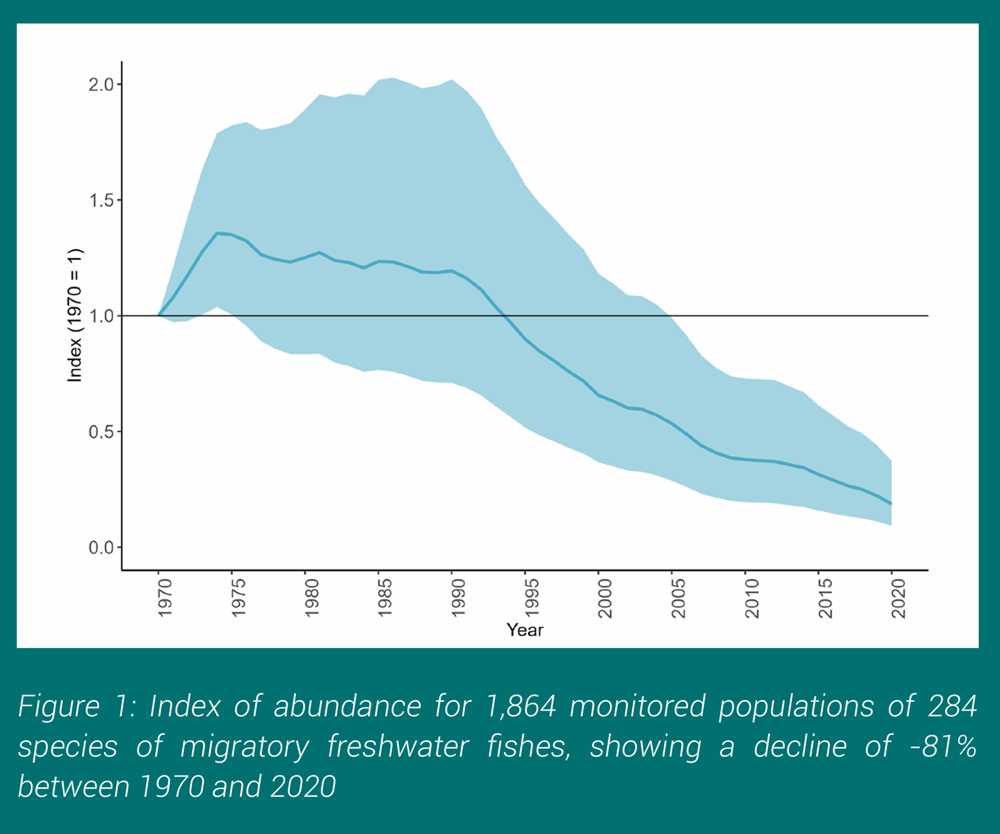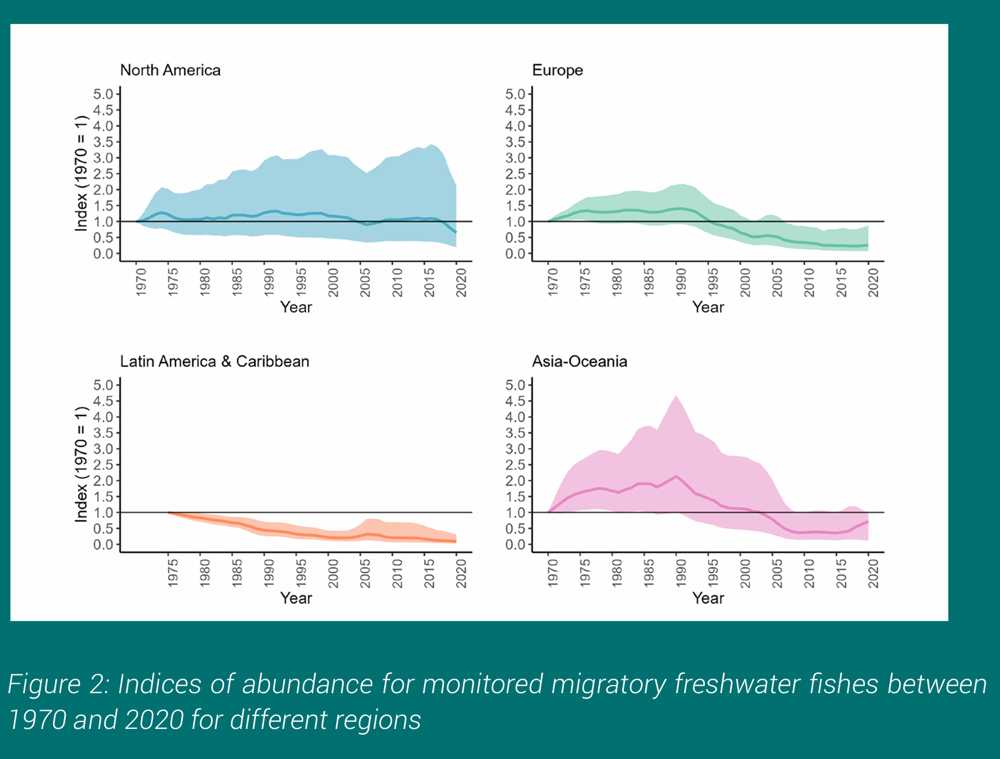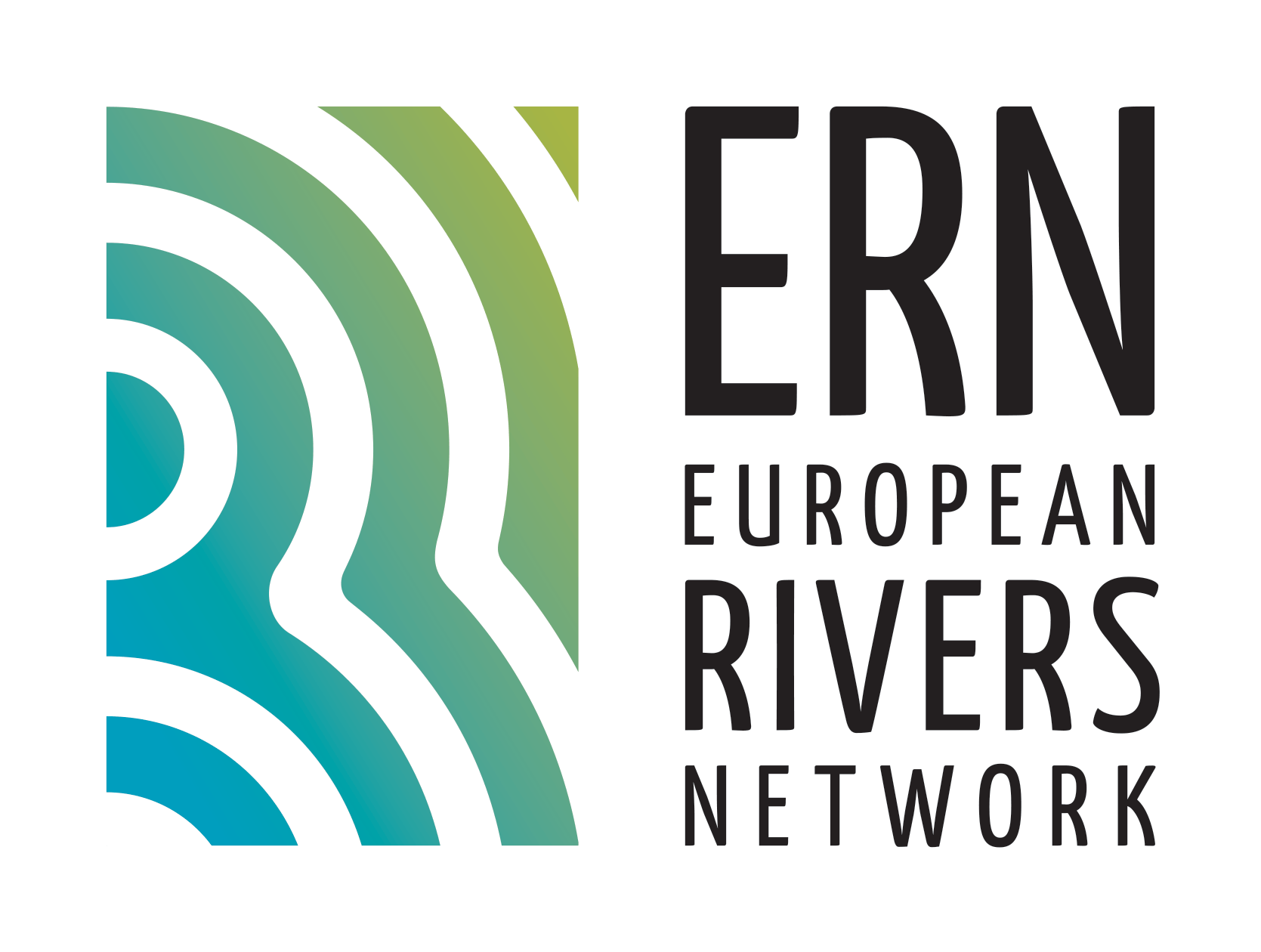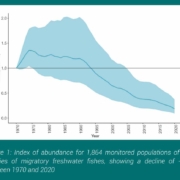81% average decline in migratory fish populations since 1970
The new Living Planet Index (LPI) report on migratory freshwater fish published today by the World Fish Migration Foundation (WFMF), ZSL, IUCN, The Nature Conservancy (TNC), Wetlands International and WWF has highlighted an 81% decline in the size of monitored populations on average between 1970 and 2020, including catastrophic declines of 91% in Latin America and the Caribbean and 75% in Europe.
Populations of migratory freshwater fish species continue to decline across the globe, risking the food security and livelihoods of millions of people, the survival of countless other species, and the health and resilience of rivers, lakes and wetlands. Habitat loss and degradation – including fragmentation of rivers by dams and other barriers and conversion of wetlands for agriculture – account for half of the threats to migratory fishes, followed by over-exploitation. Increasing pollution and the worsening impacts of climate change are also fuelling the fall in freshwater migratory fish species, which have now been declining consistently for 30 years.


The index reports on population trends of 284 monitored freshwater f ish species, representing 1,864 populations (Figure 1). Globally, the index shows a decline of -81% between 1970 and 2020, or an annual decline of 3.3%. This downward trend has been consistent over the last 3 decades. In terms of global species trends, 65% of species have declined on average, while 31% have increased.
In a press release Herman Wanningen, founder of the World Fish Migration Foundation said Herman Wanningen, fondateur de la World Fish Migration Foundation a déclaré “The catastrophic decline in migratory fish populations is a deafening wake-up call for the world. We must act now to save these keystone species and their rivers. Migratory fish are central to the cultures of many Indigenous Peoples, nourish millions of people across the globe, and sustain a vast web of species and ecosystems. We cannot continue to let them slip silently away.”
The report is not all doom and gloom. Nearly one third of monitored species have increased, suggesting that conservation efforts and improved management can have positive impacts. Some promising strategies include the improved and/or species-focused management of fisheries, habitat restoration, dam removals, the creation of conservation sanctuaries, and legal protection.
For example, in Europe and the United States, thousands of dams, levees, weirs and other river barriers have been removed in recent decades, and momentum for such actions is growing*. Dam removals can be cost-effective, job-producing solutions that help reverse the disturbing trend of biodiversity loss in freshwater systems as well as solutions that improve river health and resilience for people, too.
While scaling up dam removals is a key solution to reversing the collapse in freshwater migratory fish populations, there are more. Decision makers across the globe must urgently accelerate efforts to protect and restore free-flowing rivers through basin-wide planning, investing in sustainable renewable alternatives to the thousands of new hydropower dams that are planned across the world as well as other measures that contribute to the ambitious goals in the Kunming-Montreal Global Biodiversity Framework to protect 30% of inland waters and restore 30% of degraded inland waters. Rising to the Freshwater Challenge’s goal of restoring 300,000 km of degraded rivers will contribute enormously to reversing the trend in migratory fish populations.
Along with protecting and restoring healthy rivers, there is an urgent need to strengthen monitoring efforts; better understand fish species’ life-history, movement and behaviour; expand international cooperation, such as adding more freshwater migratory fish species to the Convention on Migratory Species (CMS); and promote greater public and political engagement.
There are many initiatives around the world supporting the recovery of migratory fish species and freshwater biodiversity in general. The Emergency Recovery Plan for Freshwater Biodiversity highlights a variety of measures that could transform the management and health of rivers, lakes and wetlands to improve the health of freshwater systems and biodiversity.
*In 2023, Europe removed a record 487 barriers – a whopping 50% increase over the previous high reported in 2022. Meanwhile, in the United States, the largest dam removals in history are currently underway along the Klamath River in California and Oregon.



 ERN France
ERN France ERN is the official WWF Freshwater Partner in France and cooperates with WWF Switzerland, Austria, Netherlands and others
ERN is the official WWF Freshwater Partner in France and cooperates with WWF Switzerland, Austria, Netherlands and others